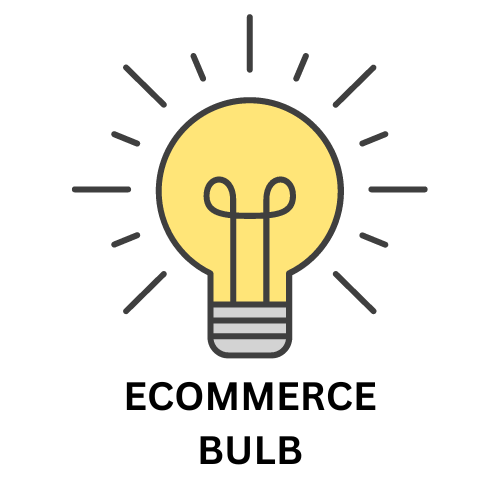In order to decide which ecommerce platform to use, Ecwid vs WooCommerce. A detailed comparison between features must be thoroughly done. If you want to decide which eCommerce platform to choose, there are many things to consider.
These are some examples of these factors:
- Cost.
- SEO friendliness.
- Page load speed.
- Canonical website URL.
- Indexing Control.
- Customizable HTML capabilities.
- Sitemap Generator.
- Integration with Google Analytics.
- Product Tagging and Categorization.
- Batch Uploading.
- Mobile Optimization.
- Built-in Blogging and Marketing Features.
- Social Sharing Buttons.
- Content Management Capabilities.
- Discount and promotion code tools.
- Easy to use Checkout.
- Reporting tools and custom reports.
- Integration of email marketing tools.
- Multiple payment options.
- Flexibility to add new eCommerce features.
- Exclusive features.
- Cons and pros.
Here we’ll discuss these factors to help you decide which platform is better for you, Ecwid or WooCommerce. And at the end of the discussion, we’ll recap and make a comparison for the scores of all these points to find out which eCommerce platform has the higher score, so that you’ll have a good view about both of them.
Pricing (Ecwid vs WooCommerce):

Ecwid vs WooCommerce Pricing – Ecwid vs WooCommerce Cost – Pricing (Ecwid vs WooCommerce):
WooCommerce and Ecwid are both popular eCommerce platforms that offer a range of features and pricing plans to suit different businesses. Here’s a comparison of their pricing structures:
WooCommerce Pricing
WooCommerce is a free plugin for WordPress. However, there are additional costs to consider, such as:
- Hosting: WooCommerce requires hosting to operate, and hosting costs vary depending on the provider and the level of resources required.
- Premium Plugins: WooCommerce’s plugin ecosystem includes many free plugins, but premium plugins with advanced features or specialized functionalities may incur additional costs.
- Development Services: For complex customizations or integrations, merchants may need to hire developers or agencies, adding to the overall cost.
Ecwid Pricing
Ecwid offers four pricing plans:
- Free: Up to 10 products, limited features
- Venture: $15/month, up to 100 products, more features
- Business: $45/month, up to 2,500 products, advanced features
- Unlimited: $99/month, unlimited products, all features
Comparison of Pricing
| Feature | WooCommerce | Ecwid |
|---|---|---|
| Core Platform Cost | Free | Paid plans from $15/month |
| Additional Costs | Hosting, premium plugins, development services | None |
| Free Plan Limitations | Unlimited products and features | Up to 10 products, limited features |
| Scalability | Highly scalable with additional resources and plugins | Scalable up to Unlimited plan |
SEO Capabilities (Ecwid vs WooCommerce):

SEO Capabilities (Ecwid vs WooCommerce):
| Feature | Ecwid | WooCommerce |
|---|---|---|
| SEO-friendly URLs | Yes | Yes |
| Meta descriptions | Yes | Yes |
| Image alt tags | Yes | Yes |
| Breadcrumbs | Yes | Yes |
| Structured data markup | Yes | Yes |
| Canonical URLs | Yes | Yes |
| Sitemap generation | Yes | Yes |
| 301 redirects | Yes | Yes |
| URL rewrites | Yes | Yes |
| Robots.txt editing | Yes | Yes |
| Google Search Console integration | Yes | Yes |
| Bing Webmaster Tools integration | Yes | Yes |
| SEO plugins | Limited | Wide range of plugins available |
Overall, both Ecwid and WooCommerce are SEO-friendly platforms. However, WooCommerce has a wider range of SEO plugins available, which can give it a slight edge in terms of SEO capabilities.
Here is a table summarizing the SEO capabilities of Ecwid and WooCommerce:
| Feature | Ecwid | WooCommerce |
|---|---|---|
| Overall SEO friendliness | Good | Very good |
| Range of SEO plugins | Limited | Wide range |
| Ease of use for SEO | Easy | Easy to moderate |
PageLoad Speed (Ecwid vs WooCommerce):

Ecwid vs WooCommerce Review – PageLoad Speed (Ecwid vs WooCommerce):
Overall, Ecwid has a faster page load speed than WooCommerce. This is due to the fact that Ecwid is a cloud-hosted platform, while WooCommerce is a self-hosted platform. Cloud-hosted platforms are typically faster because they have more resources available and are not as reliant on the performance of the user’s computer.
Here is a table summarizing the page load speed of Ecwid and WooCommerce:
| Feature | Ecwid | WooCommerce |
|---|---|---|
| Overall page load speed | Faster | Slower |
| Reasons for speed difference | Cloud-hosted platform, optimized code | Self-hosted platform, reliance on plugins and themes |
| Impact on SEO | Positive | Negative |
| Mitigation strategies | Choose good hosting, optimize images, minify code | Choose lightweight theme, use caching plugins, optimize images |
Canonical Website URL (Ecwid vs WooCommerce):

Both Ecwid and WooCommerce provide the capability to set canonical URLs for your website pages. This ensures that search engines recognize the preferred version of a URL and avoid indexing duplicate content.
Here’s a summary of how canonical URLs are handled in each platform:
Ecwid:
- Ecwid automatically generates canonical URLs for your website pages based on their unique URLs and product IDs.
- You can manually override the automatically generated canonical URLs if needed.
- Ecwid provides a tool to check for and fix canonical URL issues.
WooCommerce:
- WooCommerce doesn’t automatically generate canonical URLs.
- You can set canonical URLs using a plugin or by editing your theme’s code.
- There are several plugins available that can help you manage canonical URLs for your WooCommerce store.
Comparison Table:
| Feature | Ecwid | WooCommerce |
|---|---|---|
| Automatic canonical URL generation | Yes | No |
| Manual canonical URL override | Yes | Yes |
| Canonical URL management tool | Yes | No |
| Plugin dependency for canonical URL management | No | Yes |
Overall:
Both Ecwid and WooCommerce provide the functionality to set canonical URLs for your website pages. However, Ecwid’s automatic generation of canonical URLs and built-in management tool make it a more user-friendly option for users who don’t have extensive coding knowledge. WooCommerce, on the other hand, offers more flexibility through its plugin ecosystem.
Indexing Control (Ecwid vs WooCommerce):

Both Ecwid and WooCommerce allow you to control how your website is indexed by search engines. This includes the ability to set robots.txt rules and use meta robots tags.
Ecwid:
- Ecwid provides a built-in robots.txt editor that allows you to easily control which pages and files are crawled by search engines.
- You can also use meta robots tags to control indexing on a page-by-page basis.
WooCommerce:
- WooCommerce doesn’t have a built-in robots.txt editor. However, you can easily create and edit your robots.txt file using an FTP client or your hosting provider’s file manager.
- You can also use meta robots tags to control indexing on a page-by-page basis.
Comparison Table:
| Feature | Ecwid | WooCommerce |
|---|---|---|
| Built-in robots.txt editor | Yes | No |
| Ability to use meta robots tags | Yes | Yes |
Overall:
Both Ecwid and WooCommerce provide the functionality to control how your website is indexed by search engines. Ecwid’s built-in robots.txt editor makes it a more user-friendly option for users who are not comfortable with FTP or file management. However, WooCommerce offers more flexibility in how you control indexing, as you can directly edit the robots.txt file.
Customizable HTML Capabilities (Ecwid vs WooCommerce):

Ecwid vs WooCommerce vs WordPress – Customizable HTML Capabilities (Ecwid vs WooCommerce)
Both Ecwid and WooCommerce offer customizable HTML capabilities, allowing you to modify the appearance and functionality of your store. However, the extent of customization and the level of technical expertise required vary between the two platforms.
Ecwid:
- Ecwid provides a limited set of HTML customization options directly within the platform.
- For more advanced HTML modifications, you can connect Ecwid to your website builder or CMS and modify the HTML templates directly.
WooCommerce:
- WooCommerce offers a wider range of HTML customization options, thanks to its open-source nature and extensive plugin ecosystem.
- You can directly modify the HTML templates of your WooCommerce store using FTP or your hosting provider’s file manager.
- Additionally, there are numerous plugins available that provide pre-built HTML elements and functionalities.
Comparison Table:
| Feature | Ecwid | WooCommerce |
|---|---|---|
| Extent of direct HTML customization | Limited | Wider range |
| Requirements for advanced HTML customization | Website builder or CMS integration | Direct FTP access or file manager |
| Plugin availability for HTML customization | Limited | Extensive |
Overall:
Ecwid offers a user-friendly approach to HTML customization for non-technical users, while WooCommerce caters to users with more technical expertise who want more control over their store’s appearance and functionality.
Here’s a summary of when each platform is a better fit:
- Ecwid is a better choice if:
- You prioritize ease of use and don’t have extensive coding knowledge.
- You prefer a more out-of-the-box solution with limited customization needs.
- WooCommerce is a better choice if:
- You have more technical expertise and want more control over your store’s HTML.
- You require advanced HTML modifications or integrations with third-party tools.
- You prefer a wider range of customization options through plugins.
Sitemap Generators (Ecwid vs WooCommerce):

| Feature | Ecwid | WooCommerce |
|---|---|---|
| Sitemap generation capabilities | Built-in sitemap generator | Requires plugins for sitemap generation |
| Ease of use | Simple and straightforward | Requires plugin installation and configuration |
| Customization options | Limited customization options | Extensive customization options through plugins |
| Frequency of updates | Automatically updated with store changes | May require manual updates or plugin updates |
| Integration with search engines | Direct integration with Google Search Console and Bing Webmaster Tools | Integration with search engines depends on the plugin used |
Overall:
Ecwid offers a user-friendly and integrated solution for sitemap generation, while WooCommerce provides more flexibility and customization options through plugins. The choice between the two platforms depends on your specific needs and preferences.
Ecwid is a better choice if:
- You prioritize ease of use and prefer an out-of-the-box solution.
- You have limited customization needs and want a straightforward sitemap generation process.
WooCommerce is a better choice if:
- You have more technical expertise and want more control over your sitemap’s structure and content.
- You require advanced customization options or integrations with third-party tools.
- You have existing plugins or tools that can complement WooCommerce’s sitemap generation capabilities.
Integration With Google Analytics (Ecwid vs WooCommerce):

Ecwid vs WooCommerce vs WordPress – Integration With Google Analytics (Ecwid vs WooCommerce)
| Feature | Ecwid | WooCommerce |
|---|---|---|
| Integration method | Built-in integration with Google Analytics 4 | Requires plugins for Google Analytics integration |
| Ease of setup | Simple and straightforward | May require additional configuration depending on the plugin used |
| Tracking capabilities | Comprehensive tracking of store interactions and customer behavior | Tracking capabilities vary depending on the plugin used |
| Data visualization and analysis | Access to Google Analytics 4 dashboards for data visualization and analysis | Data visualization and analysis depend on the plugin used |
| eCommerce-specific metrics | eCommerce-specific metrics provided by Google Analytics 4 | eCommerce-specific metrics vary depending on the plugin used |
Overall:
Ecwid offers a user-friendly and integrated approach to Google Analytics integration, while WooCommerce provides more flexibility through plugins. The choice between the two platforms depends on your specific needs and preferences.
Ecwid is a better choice if:
- You prioritize ease of use and prefer an out-of-the-box solution.
- You want comprehensive tracking of store interactions and customer behavior without the need for additional plugins.
- You want access to Google Analytics 4 dashboards for data visualization and analysis.
WooCommerce is a better choice if:
- You have more technical expertise and want more control over your Google Analytics integration.
- You require specific eCommerce-specific metrics that may not be available with Ecwid’s built-in integration.
- You prefer a plugin-based approach and already have existing plugins or tools that can complement WooCommerce’s Google Analytics integration capabilities.
Product Tagging and Categorization (Ecwid vs WooCommerce):

Both Ecwid and WooCommerce offer product tagging and categorization capabilities to help you organize and manage your store’s inventory. However, there are some key differences between the two platforms in terms of how they handle these features.
Ecwid:
- Product tagging: You can add tags to your Ecwid products to help you group similar products together. Tags can be used for filtering and searching, and they can also be used to trigger automated actions, such as sending emails to customers who have purchased products with a specific tag.
- Product categorization: You can categorize your Ecwid products into a hierarchical structure. Categories can be used for navigation and filtering, and they can also be used to control product visibility.
WooCommerce:
- Product tagging: WooCommerce also allows you to add tags to your products. However, the tagging system is not as flexible as Ecwid’s. Tags cannot be used to trigger automated actions, and they are not as well integrated with the platform’s search and filtering capabilities.
- Product categorization: WooCommerce’s categorization system is similar to Ecwid’s. You can create a hierarchical structure of categories, and you can use categories for navigation, filtering, and product visibility control.
Comparison Table:
| Feature | Ecwid | WooCommerce |
|---|---|---|
| Product tagging flexibility | More flexible | Less flexible |
| Use of tags for automated actions | Supports automated actions | Does not support automated actions |
| Tag integration with search and filtering | Well-integrated with search and filtering | Not as well-integrated with search and filtering |
| Category structure and usage | Hierarchical structure, used for navigation, filtering, and visibility control | Hierarchical structure, used for navigation, filtering, and visibility control |
Overall:
Ecwid offers a more robust and flexible product tagging system, while WooCommerce’s categorization system is more powerful. The choice between the two platforms depends on your specific needs and preferences.
Here’s a summary of when each platform is a better fit:
- Ecwid is a better choice if:
- You want a flexible tagging system that can be used for automated actions and filtering.
- You prioritize ease of use and prefer a more out-of-the-box solution.
- WooCommerce is a better choice if:
- You have more technical expertise and want more control over your product categorization.
- You have a large and complex product catalog that requires a powerful categorization system.
Batch Uploading (Ecwid vs WooCommerce):

| Feature | Ecwid | WooCommerce |
|---|---|---|
| Batch uploading capabilities | Supports batch uploading of products, variants, images, and categories | Supports batch uploading of products, variants, images, and categories through plugins |
| Ease of use | Simple and straightforward using CSV files | May require additional configuration and plugin management |
| Data validation and error handling | Built-in data validation and error handling to prevent errors during import | Error handling may vary depending on the plugin used |
| Support for multiple file formats | Supports CSV files | Supports CSV, XLSX, and XML files through plugins |
| Integration with third-party tools | Limited integration with third-party tools for bulk product management | Extensive integration with third-party tools and inventory management systems |
Overall:
Ecwid offers a user-friendly and integrated approach to batch uploading, while WooCommerce provides more flexibility and plugin options. The choice between the two platforms depends on your specific needs and preferences.
Here’s a summary of when each platform is a better fit:
- Ecwid is a better choice if:
- You prioritize ease of use and prefer an out-of-the-box solution.
- You have a small to medium-sized product catalog and don’t require complex data validation or error handling.
- WooCommerce is a better choice if:
- You have more technical expertise and want more control over your batch uploading process.
- You have a large and complex product catalog that requires advanced data validation, error handling, and integration with third-party tools.
- You prefer a plugin-based approach and have existing plugins or tools that can complement WooCommerce’s batch uploading capabilities.
Mobile Optimization (Ecwid vs WooCommerce):

Both Ecwid and WooCommerce offer mobile-optimized experiences for your online store, ensuring a seamless shopping experience for your customers on their smartphones and tablets.
Ecwid
Ecwid provides a dedicated mobile app that allows you to manage your store, process orders, and interact with customers directly from your mobile device. The app offers a user-friendly interface and essential features for managing your store on the go.
WooCommerce
WooCommerce doesn’t offer a dedicated mobile app, but it provides a mobile-optimized storefront that adapts to various screen sizes and devices. This ensures that your store looks and functions well on smartphones and tablets. Additionally, there are various plugins available for WooCommerce that can enhance the mobile shopping experience.
Comparison Table:
| Feature | Ecwid | WooCommerce |
|---|---|---|
| Dedicated mobile app | Yes | No |
| Mobile-optimized storefront | Yes | Yes |
| Mobile app features | Manage store, process orders, interact with customers | None |
| Plugin availability for mobile enhancements | Limited | Extensive |
Overall:
Both Ecwid and WooCommerce provide adequate mobile optimization for your online store. Ecwid’s dedicated mobile app offers more hands-on management capabilities, while WooCommerce’s mobile-optimized storefront and plugin ecosystem provide flexibility for customization.
Here’s a summary of when each platform is a better fit:
- Ecwid is a better choice if:
- You prioritize a dedicated mobile app for managing your store on the go.
- You prefer a more out-of-the-box solution with essential mobile management features.
- WooCommerce is a better choice if:
- You prefer a plugin-based approach and want more control over your mobile store’s functionality.
- You have specific mobile optimization requirements that may need custom development.
- You have an existing WooCommerce store and want to leverage its plugin ecosystem for mobile enhancements.
Built-in Blogging & Marketing Features (Ecwid vs WooCommerce):

| Feature | Ecwid | WooCommerce |
|---|---|---|
| Built-in blog | Yes | No |
| Blog customization | Limited | Extensive |
| Marketing automation | Limited | Requires plugins |
| Email marketing integration | Limited | Requires plugins |
| Social media marketing | Limited | Requires plugins |
Overall:
Ecwid offers a built-in blog with limited customization options, while WooCommerce requires plugins for blogging and marketing functionalities. The choice between the two platforms depends on your specific needs and preferences.
Ecwid is a better choice if:
- You prioritize ease of use and prefer a more out-of-the-box solution.
- You have basic blogging and marketing needs and don’t require advanced customization or integrations.
WooCommerce is a better choice if:
- You have more technical expertise and want more control over your blog and marketing functionalities.
- You require advanced customization options for your blog.
- You need integration with specific marketing tools or platforms.
Here’s a more detailed summary of the built-in blogging and marketing features of each platform:
Ecwid:
- Built-in blog: Ecwid provides a built-in blog platform that allows you to create and publish blog posts directly from your store’s dashboard. The blog interface is simple and easy to use, and it offers basic customization options, such as adding images and formatting text.
- Marketing automation: Ecwid offers limited marketing automation capabilities, such as email autoresponders and abandoned cart reminders. However, these features are not as robust as those offered by WooCommerce plugins.
- Email marketing integration: Ecwid integrates with a few popular email marketing platforms, such as MailChimp and Sendinblue. However, the integration is limited, and you may need to use a plugin for more advanced email marketing features.
- Social media marketing: Ecwid provides basic social media marketing tools, such as social sharing buttons and social media post scheduling. However, you may need to use plugins for more advanced social media marketing campaigns.
WooCommerce:
- Blog: WooCommerce doesn’t offer a built-in blog platform. However, there are numerous plugins available that can add blogging functionality to your WooCommerce store. These plugins offer a wide range of features, from basic blog publishing to advanced customization options.
- Marketing automation: WooCommerce requires plugins for marketing automation. There are many popular marketing automation plugins available, such as WooCommerce Marketing Automation and HubSpot for WooCommerce. These plugins offer a wide range of features, such as email marketing, SMS marketing, and abandoned cart reminders.
- Email marketing integration: WooCommerce integrates with a wide range of email marketing platforms, including MailChimp, Sendinblue, and ActiveCampaign. The integration is typically more robust than Ecwid’s integration, allowing you to sync your customer data and send targeted email campaigns.
- Social media marketing: WooCommerce requires plugins for social media marketing. There are many popular social media marketing plugins available, such as WooCommerce Social Media Suite and YITH WooCommerce Social Login. These plugins offer a wide range of features, such as social sharing buttons, social media post scheduling, and social media login integration.
Social Sharing Buttons Availability (Ecwid vs WooCommerce):

Both Ecwid and WooCommerce offer social sharing buttons to help customers share your products and content on their social media channels. However, the implementation and availability of these buttons differ between the two platforms.
Ecwid
Ecwid provides built-in social sharing buttons that are automatically displayed on product pages. These buttons are easy to use and require no additional setup. You can choose from a variety of social media platforms, including Facebook, Twitter, Pinterest, and Instagram.
WooCommerce
WooCommerce doesn’t offer built-in social sharing buttons. However, there are numerous plugins available that can add social sharing buttons to your WooCommerce store. These plugins offer a wider range of features than Ecwid’s built-in buttons, such as customizable button placements, social media analytics, and click tracking.
Comparison Table:
| Feature | Ecwid | WooCommerce |
|---|---|---|
| Built-in social sharing buttons | Yes | No |
| Button customization | Limited | Extensive |
| Social media analytics | Limited | Requires plugins |
| Click tracking | Limited | Requires plugins |
Overall:
Ecwid offers a simple and user-friendly approach to social sharing buttons, while WooCommerce provides more flexibility and customization options through plugins. The choice between the two platforms depends on your specific needs and preferences.
Ecwid is a better choice if:
- You prioritize ease of use and prefer an out-of-the-box solution.
- You have basic social sharing needs and don’t require advanced customization or analytics.
WooCommerce is a better choice if:
- You have more technical expertise and want more control over your social sharing buttons.
- You require advanced customization options, such as different button styles, placements, and social media integrations.
- You want to track the performance of your social sharing buttons and gain insights into customer engagement.
Content Management Capabilities (Ecwid vs WooCommerce):

| Feature | Ecwid | WooCommerce |
|---|---|---|
| Page creation and editing | Built-in page editor | Requires plugins for page creation and editing |
| Custom page templates | Limited | Extensive |
| Shortcodes | Limited | Extensive |
| Content blocks | Limited | Extensive |
| Customizable checkout | Limited | Extensive |
| Multilingual support | Built-in multilingual support | Requires plugins for multilingual support |
Overall:
Ecwid offers a basic content management system with limited customization options, while WooCommerce provides a more powerful and flexible content management system through plugins. The choice between the two platforms depends on your specific needs and preferences.
Ecwid is a better choice if:
- You prioritize ease of use and prefer an out-of-the-box solution.
- You have basic content management needs and don’t require advanced customization or integrations.
WooCommerce is a better choice if:
- You have more technical expertise and want more control over your content management system.
- You require advanced customization options, such as custom page templates, shortcodes, and content blocks.
- You need to create a highly customized checkout experience.
- You want to translate your store into multiple languages.
Here’s a more detailed summary of the content management capabilities of each platform:
Ecwid:
- Page creation and editing: Ecwid provides a built-in page editor that allows you to create and edit basic pages, such as your store’s About Us page and Contact Us page. The editor is simple and easy to use, but it offers limited customization options.
- Custom page templates: Ecwid doesn’t offer a built-in mechanism for creating custom page templates. However, you can use third-party tools and workarounds to create custom templates for your pages.
- Shortcodes: Ecwid supports a limited set of shortcodes that you can use to insert additional content into your pages, such as buttons, forms, and social media feeds.
- Content blocks: Ecwid doesn’t offer a built-in content block system. However, you can use third-party tools to create and manage content blocks for your pages.
- Customizable checkout: Ecwid’s checkout process is somewhat customizable, but the options are limited compared to WooCommerce. You can modify the checkout fields, layout, and messaging, but you cannot create a completely custom checkout experience.
- Multilingual support: Ecwid offers built-in multilingual support, allowing you to translate your store’s content into multiple languages. However, the translation process is manual, and it can be time-consuming to translate all of your content.
WooCommerce:
- Page creation and editing: WooCommerce requires plugins for page creation and editing. There are numerous plugins available, such as Elementor and Beaver Builder, that offer a wide range of features, from basic page editing to advanced drag-and-drop page building.
- Custom page templates: WooCommerce allows you to create custom page templates using HTML, CSS, and PHP. This gives you complete control over the layout and design of your pages.
- Shortcodes: WooCommerce supports a wide range of shortcodes that you can use to insert additional content into your pages, such as product listings, sliders, and testimonials.
- Content blocks: WooCommerce offers a built-in content block system that allows you to create and manage reusable blocks of content for your pages. This can save you time and effort when creating new pages.
- Customizable checkout: WooCommerce’s checkout process is highly customizable, allowing you to create a completely custom checkout experience. You can modify the checkout fields, layout, messaging, and payment options.
- Multilingual support: WooCommerce requires plugins for multilingual support. There are numerous plugins available, such as WPML and Polylang, that allow you to translate your store’s content into multiple languages. These plugins offer more advanced features than Ecwid’s built-in multilingual support, such as automatic translation and language detection.
Discounts & Promotion Codes (Ecwid vs WooCommerce):

Both Ecwid and WooCommerce offer robust discount and promotion code capabilities to help you incentivize purchases and drive sales for your online store. Here’s a summary of their key features:
Ecwid
- Discount types: Ecwid supports a variety of discount types, including percentage discounts, fixed-amount discounts, and free shipping discounts.
- Discount rules: Ecwid allows you to create targeted discount rules based on customer groups, product categories, minimum order amounts, and specific products.
- Promotion codes: Ecwid enables you to generate and manage promotion codes that customers can apply at checkout to redeem discounts.
- Discount scheduling: Ecwid allows you to schedule discounts to run during specific periods or on designated days of the week.
WooCommerce
- Discount types: WooCommerce supports a wide range of discount types, including percentage discounts, fixed-amount discounts, cart discounts, group discounts, and product-specific discounts.
- Discount rules: WooCommerce offers advanced discount rule capabilities, allowing you to create highly targeted discounts based on customer attributes, cart contents, purchase history, and shipping locations.
- Promotion codes: WooCommerce enables you to generate and manage promotion codes with various settings, such as usage limits, expiration dates, and applicable products.
- Discount scheduling: WooCommerce allows you to schedule discounts to run during specific periods, on designated days of the week, or in conjunction with specific events.
Comparison Table
| Feature | Ecwid | WooCommerce |
|---|---|---|
| Discount types | Percentage, fixed-amount, free shipping | Percentage, fixed-amount, cart, group, product-specific |
| Discount rules | Customer groups, product categories, minimum order amounts, specific products | Customer attributes, cart contents, purchase history, shipping locations |
| Promotion codes | Yes | Yes |
| Discount scheduling | Yes | Yes |
Choose Ecwid if:
- You prefer a simple and easy-to-use platform for discounts and promotions.
- You have basic discount needs and don’t require complex targeting or scheduling rules.
Choose WooCommerce if:
- You need more advanced discount rules and customization options.
- You want to create highly targeted discounts based on various customer and purchase criteria.
- You have the technical expertise to manage WooCommerce’s more complex plugin ecosystem.
Easy to Use Checkout (Ecwid vs WooCommerce):

| Feature | Ecwid | WooCommerce |
|---|---|---|
| Checkout process | Streamlined and straightforward | Requires more steps and configuration |
| Checkout fields | Customizable and essential fields only | Requires additional plugins for advanced fields |
| Payment gateways | Wide range of options, including major providers | Extensive options, including niche providers |
| Guest checkout | Available and optimized for mobile | Available, but may require plugin configuration |
| Checkout security | PCI DSS compliant and regularly updated | PCI DSS compliant and requires plugin updates |
Overall
Ecwid offers a user-friendly and streamlined checkout experience, while WooCommerce provides more flexibility and customization options through plugins. The choice between the two platforms depends on your specific needs and preferences.
Ecwid is a better choice if:
- You prioritize ease of use and want a simple, out-of-the-box checkout solution.
- You have a small to medium-sized store and don’t require extensive checkout customization.
- You want a checkout experience that is optimized for mobile users.
WooCommerce is a better choice if:
- You have more technical expertise and want more control over your checkout process.
- You require advanced customization options, such as additional checkout fields, payment gateway integrations, and one-page checkout.
- You have a large store with specific checkout needs and want to integrate with third-party tools.
Reporting Tools and Custom Reports (Ecwid vs WooCommerce):

| Feature | Ecwid | WooCommerce |
|---|---|---|
| Built-in reporting tools | Provides basic sales, product performance, and customer insights | Offers comprehensive sales, product, customer, and marketing analytics |
| Custom reports | Limited custom report creation | Extensive custom report creation through plugins |
| Data visualization | Simple charts and graphs | Advanced charts, graphs, and dashboards |
| Data export | CSV export | CSV, XLSX, and XML export |
| Third-party integrations | Limited integrations | Extensive integrations with third-party analytics and reporting tools |
Overall
Ecwid offers basic reporting tools for essential business insights, while WooCommerce provides more advanced analytics and custom reporting capabilities through plugins. The choice between the two platforms depends on your specific needs and preferences.
Ecwid is a better choice if:
- You prioritize ease of use and prefer a simple, out-of-the-box reporting solution.
- You have basic reporting needs and don’t require extensive data analysis or custom report creation.
- You are comfortable with Ecwid’s built-in reporting tools and don’t need additional integrations.
WooCommerce is a better choice if:
- You have more technical expertise and want more control over your analytics and reporting capabilities.
- You require advanced analytics features, such as cohort analysis, customer lifetime value tracking, and marketing campaign attribution.
- You need to create custom reports tailored to your specific business needs.
- You want to integrate with third-party analytics and reporting tools for more in-depth data analysis and insights.
Integration of Email Marketing Tools (Ecwid vs WooCommerce):

| Feature | Ecwid | WooCommerce |
|---|---|---|
| Built-in email marketing | Limited | Requires plugins |
| Email marketing integrations | Supports MailChimp, Sendinblue, and other popular platforms | Integrates with a wide range of email marketing platforms, including MailChimp, ActiveCampaign, Sendinblue, and more |
| Email data synchronization | Basic customer data synchronization | Advanced customer data synchronization, including purchase history, abandoned cart data, and product preferences |
| Email campaign automation | Limited automation capabilities | Extensive email campaign automation options, including triggered emails, welcome series, and abandoned cart reminders |
| Email analytics and reporting | Basic email performance tracking | Comprehensive email analytics and reporting, including open rates, click-through rates, and conversion rates |
Overall
Ecwid offers basic email marketing capabilities through built-in integrations and limited automation, while WooCommerce provides more advanced email marketing features through plugins and integrations. The choice between the two platforms depends on your specific needs and preferences.
Ecwid is a better choice if:
- You prioritize ease of use and prefer a simple, out-of-the-box email marketing solution.
- You have basic email marketing needs and don’t require extensive automation or advanced analytics.
- You are comfortable with Ecwid’s built-in integrations and don’t need additional plugins.
WooCommerce is a better choice if:
- You have more technical expertise and want more control over your email marketing strategy.
- You require advanced email automation features, such as triggered emails, welcome series, and personalized product recommendations.
- You need comprehensive email analytics and reporting to track the performance of your campaigns.
- You want to integrate with your preferred email marketing platform for seamless data synchronization and campaign management.
Multiple Payment Options (Ecwid vs WooCommerce):

| Feature | Ecwid | WooCommerce |
|---|---|---|
| Available payment gateways | Over 70 options, including major credit cards, PayPal, cryptocurrency, and local payment methods | Extensive options, including major credit cards, PayPal, cryptocurrency, local payment methods, and niche providers |
| On-site payment processing | Yes, with select payment gateways | Yes, with a wider range of payment gateways |
| Payment gateway integration | Simple and straightforward | May require additional configuration and plugin management |
| Payment fees | Transparent pricing with no hidden fees | May incur additional fees depending on the chosen payment gateway |
| Recurring payments | Limited support for recurring payments | Extensive support for recurring payments, including subscriptions and memberships |
Overall
Both Ecwid and WooCommerce offer a wide range of payment options to cater to your global clientele. Ecwid provides a user-friendly approach to payment gateway integration, while WooCommerce offers more flexibility and customization options through plugins. The choice between the two platforms depends on your specific needs and preferences.
Ecwid is a better choice if:
- You prioritize ease of use and prefer a simple, out-of-the-box payment solution.
- You have a small to medium-sized store and don’t require extensive payment gateway customization.
- You want a transparent pricing structure with no hidden fees.
WooCommerce is a better choice if:
- You have more technical expertise and want more control over your payment options.
- You require advanced payment gateway integrations, such as on-site payment processing for specific regions or niche payment providers.
- You need to support recurring payments for subscriptions or memberships.
- You want to integrate with third-party payment management tools for more control over payment processing and fraud prevention.
Flexibility to Add New eCommerce Features (Ecwid vs WooCommerce):

| Feature | Ecwid | WooCommerce |
|---|---|---|
| Built-in features | Limited | Extensive |
| Plugin availability | Limited | Extensive |
| Custom development | Requires coding expertise | Can be done with coding expertise or through plugins |
| Integration with third-party tools | Limited | Extensive |
Overall:
WooCommerce offers greater flexibility in adding new eCommerce features due to its extensive plugin ecosystem and openness to custom development. Ecwid, on the other hand, has a more limited set of built-in features and relies more on third-party integrations.
Ecwid is a better choice if:
- You prioritize ease of use and prefer a simple, out-of-the-box solution with essential eCommerce features.
- You have basic eCommerce needs and don’t require extensive customization or integrations.
- You don’t have coding expertise and want a solution with minimal setup and maintenance.
WooCommerce is a better choice if:
- You have more technical expertise and want more control over your eCommerce features.
- You require advanced eCommerce features, such as subscription management, product bundling, or personalized product recommendations.
- You want to integrate with third-party tools for specialized eCommerce functionality.
Here’s a more detailed breakdown of each platform’s flexibility:
Ecwid:
- Built-in features: Ecwid provides a set of essential eCommerce features, including product management, order processing, customer management, and payment gateways. However, its built-in features are more limited compared to WooCommerce.
- Plugin availability: Ecwid’s plugin ecosystem is relatively smaller than WooCommerce’s, but it still offers a variety of plugins for extending its functionality. These plugins cover various aspects of eCommerce, such as marketing, shipping, and customer service.
- Custom development: Ecwid allows for custom development through its API, but this requires coding expertise. If you don’t have coding skills, you may need to rely on third-party developers for custom integrations.
- Integration with third-party tools: Ecwid can integrate with a limited number of third-party tools for eCommerce functionality. However, its integrations are not as extensive as WooCommerce’s.
WooCommerce:
- Built-in features: WooCommerce offers a far more comprehensive set of built-in eCommerce features, including advanced product customization, product variations, inventory management, tax calculations, and shipping options.
- Plugin availability: WooCommerce boasts an extensive plugin ecosystem with thousands of plugins available for various eCommerce needs. These plugins cover a wide range of functionalities, from marketing automation and customer relationship management to product recommendations and social media integrations.
- Custom development: WooCommerce is built on open-source code, allowing for extensive custom development. You can create custom plugins, modify themes, or integrate with third-party tools to achieve your specific eCommerce requirements.
- Integration with third-party tools: WooCommerce integrates with a vast array of third-party tools, including marketing automation platforms, CRM systems, shipping carriers, and payment processors. This allows you to connect your store with a comprehensive ecosystem of tools for seamless operation.
Exclusive Features (Ecwid vs WooCommerce):

Both Ecwid and WooCommerce offer a suite of powerful features to help you run a successful online store. While they share many core functionalities, each platform also offers unique features that cater to specific needs and preferences.
Ecwid’s Exclusive Features:
- Built-in social commerce: Ecwid seamlessly integrates with social media platforms, allowing you to sell products directly on Facebook, Instagram, and Pinterest. This feature is particularly useful for businesses that have a strong social media presence.
- Instant setup and quick launch: Ecwid’s setup process is incredibly simple and can be completed in minutes. This makes it an ideal choice for businesses that need to launch their store quickly and easily.
- Mobile-optimized shopping experience: Ecwid provides a user-friendly and mobile-optimized shopping experience for your customers. This is crucial for businesses that cater to a mobile-first audience.
WooCommerce’s Exclusive Features:
- Extensive plugin ecosystem: WooCommerce’s vast plugin ecosystem provides access to thousands of additional features and functionalities. This gives you the flexibility to customize your store to meet your specific needs.
- Open-source code and customization: WooCommerce is built on open-source code, allowing for extensive customization and modification. This is ideal for businesses that have the technical expertise to tailor their store’s functionality.
- Advanced marketing automation: WooCommerce offers advanced marketing automation capabilities through plugins. This allows you to automate marketing campaigns, track customer behavior, and personalize the shopping experience.
Overall:
Ecwid’s exclusive features focus on ease of use, social commerce integration, and mobile optimization, making it a suitable choice for businesses that prioritize simplicity and speed. WooCommerce’s exclusive features emphasize plugin flexibility, open-source customization, and advanced marketing automation, catering to businesses that require extensive control and sophisticated marketing strategies.
The choice between the two platforms ultimately depends on your specific needs, preferences, and technical expertise. Consider your business goals, target audience, and technical capabilities when making your decision.
Market Share (Ecwid vs WooCommerce):

In the realm of eCommerce platforms, WooCommerce holds a dominant position with a market share of approximately 23%, while Ecwid trails behind with a market share of around 1.45%. This significant difference in market share reflects the widespread adoption of WooCommerce due to its open-source nature, extensive plugin ecosystem, and suitability for larger, more complex stores.
Ecwid’s market share is relatively smaller due to several factors:
- Limited plugin ecosystem: Ecwid’s plugin ecosystem is smaller compared to WooCommerce’s, which can restrict the customization options available to businesses.
- Focus on smaller businesses: Ecwid’s pricing and features are more geared towards smaller businesses, making it less attractive to larger enterprises that require more advanced functionality.
- Less widespread adoption: Ecwid has not yet achieved the same level of widespread adoption as WooCommerce, which can make it less appealing to businesses that prefer established platforms.
Cons Of Ecwid vs WooCommerce:

Both Ecwid and WooCommerce are popular eCommerce platforms with their own strengths and weaknesses. Here’s a summary of the key downsides of each platform:
Ecwid Downsides:
- Limited plugin ecosystem: Ecwid’s plugin ecosystem is significantly smaller than WooCommerce’s, which can restrict the customization options available to businesses. This can be a major drawback for businesses that require advanced functionality or integrations.
- Focus on smaller businesses: Ecwid’s pricing and features are more geared towards smaller businesses, making it less attractive to larger enterprises that require more advanced functionality and scalability. For instance, Ecwid’s built-in product management capabilities may not be robust enough for businesses with a large and complex product catalog.
- Less widespread adoption: Ecwid has not yet achieved the same level of widespread adoption as WooCommerce, which can make it less appealing to businesses that prefer established platforms. This can also limit the availability of third-party integrations and support resources.
WooCommerce Downsides:
- Steeper learning curve: WooCommerce’s open-source nature and extensive plugin ecosystem can make it more complex to set up and manage compared to Ecwid. Businesses may need to invest time and resources in learning the platform or hiring developers to handle more complex tasks.
- Potential for conflicts and compatibility issues: With WooCommerce’s vast plugin ecosystem, there is a potential for conflicts and compatibility issues between plugins. Managing and troubleshooting these issues can be time-consuming and require technical expertise.
- Security considerations: As an open-source platform, WooCommerce requires more proactive security measures to protect against potential vulnerabilities and cyberattacks. Businesses need to ensure they are regularly updating their plugins, themes, and core WooCommerce software to maintain a secure environment.
Hidden Charges / Cost & Fees (Ecwid vs WooCommerce):

Both Ecwid and WooCommerce offer flexible pricing plans to accommodate businesses of all sizes and needs. However, there are some potential hidden charges or fees to be aware of when choosing between these two platforms.
Ecwid Hidden Charges:
- Transaction fees: Ecwid does not charge transaction fees for processing payments through its built-in payment gateway. However, if you choose to use a third-party payment gateway, you may incur transaction fees depending on the provider and your processing volume.
- Additional plugins or services: Depending on your specific needs, you may need to purchase additional plugins or services to extend Ecwid’s functionality. These additional costs can vary depending on the plugin or service.
- Currency conversion fees: If your store operates in multiple currencies, you may incur currency conversion fees when processing payments. These fees vary depending on the currency exchange rates and the payment gateway you use.
WooCommerce Hidden Charges:
- Third-party extensions or plugins: WooCommerce’s extensive plugin ecosystem offers many free plugins, but some plugins may require a license fee or subscription. These costs can add up depending on the number of plugins you need.
- Hosting and domain name: WooCommerce is a self-hosted platform, so you will need to purchase hosting and a domain name for your store. These costs vary depending on the hosting provider and your specific requirements.
- Additional themes or customizations: If you want a more customized store design, you may need to hire a developer or purchase a premium theme. These costs can vary depending on the complexity of the customization.
Here’s a table summarizing the potential hidden charges for each platform:
| Feature | Ecwid | WooCommerce |
|---|---|---|
| Transaction fees | No transaction fees for built-in payment gateway | May incur transaction fees for third-party payment gateways |
| Additional plugins or services | May need additional plugins or services | May need additional extensions or plugins |
| Currency conversion fees | May incur currency conversion fees for multi-currency stores | May incur currency conversion fees for multi-currency stores |
| Hosting and domain name | Included in Ecwid pricing plans | Separate cost for hosting and domain name |
| Additional themes or customizations | May need to purchase a premium theme or hire a developer | May need to purchase a premium theme or hire a developer |
What are the forte of eCommerce Platforms (Ecwid vs WooCommerce)?
Here’s a summary of the key strengths or “forte” of Ecwid and WooCommerce:
Ecwid’s Forte:
- Ease of use: Ecwid is known for its user-friendly interface and straightforward setup process, making it easy for businesses to get started with eCommerce. It offers a drag-and-drop store builder, pre-designed templates, and intuitive product management tools.
- Social commerce integration: Ecwid’s built-in social commerce features allow businesses to sell products directly on social media platforms, expanding their reach and sales opportunities. It seamlessly integrates with Facebook, Instagram, and Pinterest.
- Mobile-optimized experience: Ecwid provides a mobile-optimized shopping experience for customers, ensuring a seamless experience across devices. Its store design and checkout process are optimized for mobile users.
- Affordability: Ecwid’s pricing plans are generally more affordable than WooCommerce, making it a cost-effective option for small businesses and startups. It offers a free plan for basic needs and paid plans with scalable features.
WooCommerce’s Forte:
- Flexibility and customization: WooCommerce’s open-source nature and extensive plugin ecosystem make it highly flexible and customizable. It allows businesses to tailor their stores to meet their specific needs and preferences through a vast array of plugins.
- Advanced marketing automation: WooCommerce offers advanced marketing automation capabilities through plugins. It enables businesses to automate marketing campaigns, track customer behavior, and personalize the shopping experience.
- Scalability: WooCommerce is designed to handle large product catalogs, high traffic volumes, and complex business requirements. It can scale to support the growth of businesses of all sizes.
- Widespread community and support: WooCommerce has a large and active community of developers and users who provide support and resources. This makes it easier to find solutions to technical issues and learn new features.
Conclusion (Comparison Table for Ecwid vs WooCommerce):
As we can see from the detailed comparison between these two platforms (Ecwid vs WooCommerce) that the overall score for WooCommerce is better than Ecwid’s with a very slight margin.
WooCommerce Excels in:
- Flexibility and Customization: WooCommerce’s open-source nature and vast plugin ecosystem provide merchants with unparalleled flexibility to tailor the platform to their specific needs and preferences.
- Cost-Effectiveness: WooCommerce’s free core plugin and flexible pricing options make it an attractive choice for businesses of all sizes, especially those on a budget.
- Ease of Use: WooCommerce’s user-friendly interface and intuitive design make it easy for merchants with varying levels of technical expertise to set up and manage their online stores.
- Wide Range of Plugins: WooCommerce’s vast plugin ecosystem offers a comprehensive solution for virtually any eCommerce need, from marketing automation and CRM integrations to advanced product customization and shipping options.
Ecwid Excels in:
1. Ease of Use: Ecwid is known for its user-friendly interface and straightforward setup process. It offers a drag-and-drop store builder, pre-designed templates, and intuitive product management tools, making it easy for businesses to get started with eCommerce without extensive technical expertise.
2. Social Commerce Integration: Ecwid seamlessly integrates with popular social media platforms like Facebook, Instagram, and Pinterest, allowing businesses to sell products directly on these platforms. This integration expands their reach and sales opportunities by leveraging the vast social media audience and enabling customers to purchase directly without leaving their social media feeds.
3. Mobile-Optimized Experience: Ecwid provides a mobile-optimized shopping experience, ensuring a seamless and convenient experience for customers across all devices. Its store design and checkout process are optimized for mobile users, ensuring a smooth and consistent shopping experience regardless of the device used.
4. Affordability: Ecwid’s pricing plans are generally more affordable than other popular eCommerce platforms like WooCommerce, making it a cost-effective option for small businesses and startups. It offers a free plan for basic needs and paid plans with scalable features that grow with the business’s needs.
In addition to these key strengths, Ecwid also offers features like:
- Built-in payment processing: Ecwid has its own payment gateway, allowing businesses to process payments without needing a third-party provider.
- Multilingual support: Ecwid supports multiple languages, making it suitable for businesses with a global customer base.
- Marketing tools: Ecwid provides various marketing tools, including email marketing, SEO optimization, and social media marketing integrations.
Note that the comparison was done with eCommerce and online business in mind.
I hope this could give you the required insight to choose which eCommerce Platform to use for your future projects!
Here is the full comparison & Ecwid vs WooCommerce Review in easy to comprehend bullet points:
| eCommerce Platform | WooCommerce | Ecwid |
|---|---|---|
| Price | 9.0 | 8.3 |
| SEO Friendliness | 8.0 | 7.8 |
| Page Load Speed | 7.0 | 9.2 |
| Canonical Website URL | 8.5 | 8.4 |
| Indexing Control | 8.0 | 7.7 |
| Customizable HTML capabilities | 9.5 | 9.0 |
| Sitemap Generator | 8.5 | 8.5 |
| Integration With Google Analytics | 8.5 | 8.5 |
| Product Tagging & Categorization | 8.0 | 8.6 |
| Batch Uploading | 8.0 | 8.2 |
| Mobile Optimization | 8.0 | 8.2 |
| Built-in Blogging & Marketing Features | 9.0 | 8.7 |
| Social Sharing Buttons | 9.0 | 8.7 |
| Content Management Capabilities | 8.0 | 7.6 |
| Discount & Promo Code Tools | 8.5 | 8.2 |
| Easy to Use Checkout | 7.5 | 8.5 |
| Reporting Tools & Custom Reports | 9.5 | 9.3 |
| Integration of Email Marketing Tools | 8.5 | 8.3 |
| Multiple Payment Options | 9.0 | 8.8 |
| Flexibility to Add New eCommerce Features | 9.0 | 8.0 |
| Exclusive Features | 7.5 | 7.5 |
| Market Share | 9.5 | 7.6 |
| CONS & PROS | 7.5 | 7.5 |
| Forte | 8.4 | 8.5 |
| Hidden Fees & Charges | 8.0 | 8.7 |
| Overall Assessment (Average) | 8.4 | 8.3 |


Leave a Reply